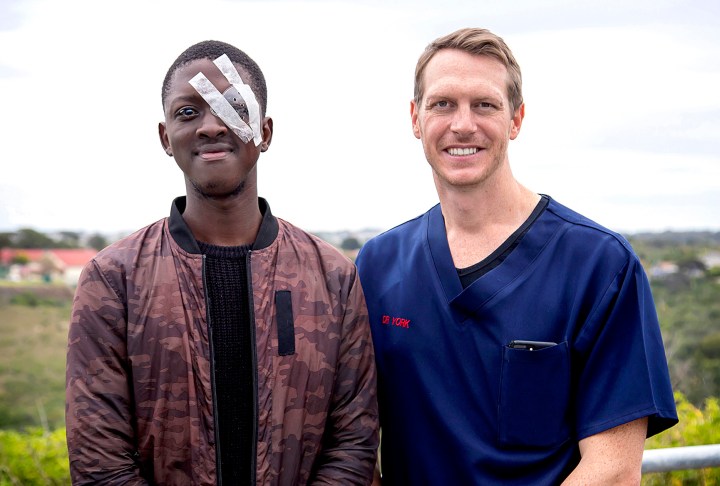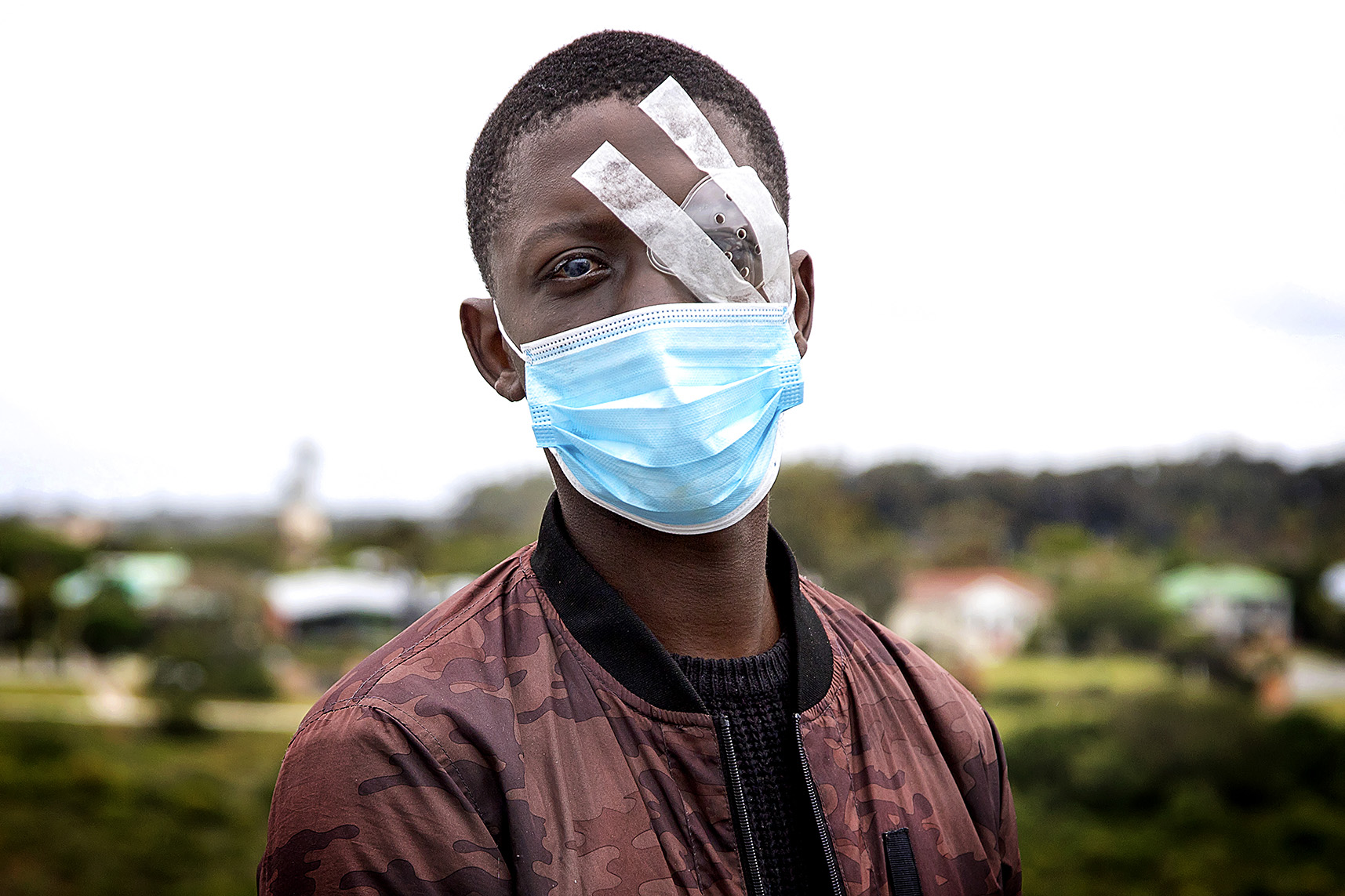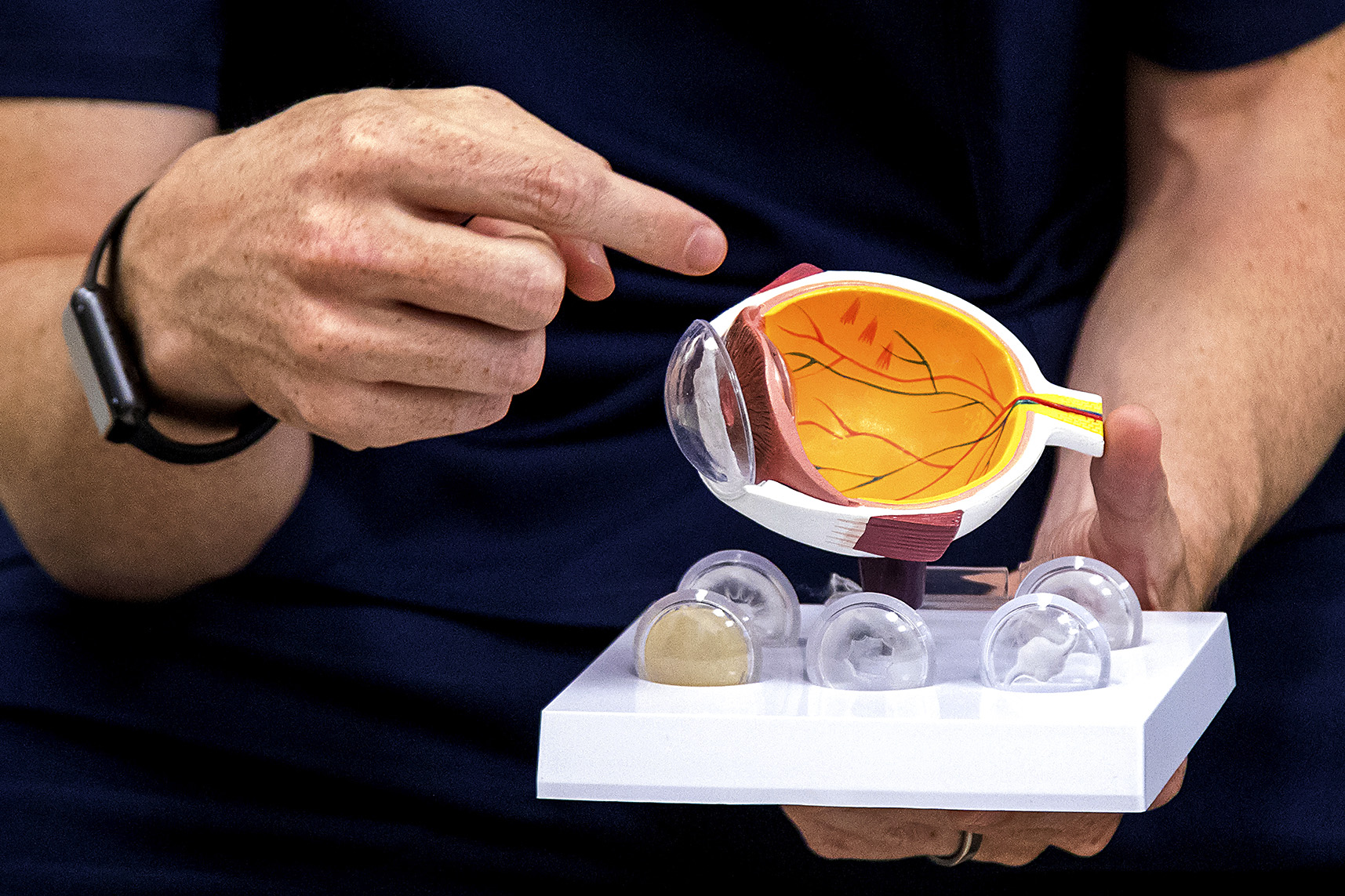Maverick Citizen Eastern Cape
Determined PE man sees again after cornea transplant quest

It took determination and resilience, relentless phone calls and a lot of research, but this week a young Nelson Mandela Bay man, Aphiwe Mene, could see again after fighting for a cornea transplant for close to a year.
When he was told by doctors that he would have to be on a waiting list for longer than a decade to have his sight restored, Aphiwe Mene, 25, refused to believe that there was no other solution for his rapidly deteriorating sight.
At the age of 12, Mene was diagnosed with a disease called keratoconus, which causes the cornea to thin and gradually bulge outward into a cone shape.
“I realised that something was wrong because I could no longer see [what was written] on the board in class,” he said.
He was eventually placed on the waiting list for a cornea transplant, but in South Africa, patients wait for about a decade for the procedure.
“I have been on that list forever,” he said.

Aphiwe Mene after his transplant. The sight in his one eye has been restored. (Photo: Donna van der Watt)
Despite his increasing struggles to see, he passed matric and began a degree in public relations. But in 2016 his deteriorating sight forced him to drop out of university.
“I kept failing because I couldn’t see. It was hard for me to hear my friends going back to university day by day,” he said.
In 2019, Mene, who by then had sight in only one eye, lost almost all his vision after an accident in which he received a blow to the eye that still had some vision.
He visited a doctor in Cape Town and tried to raise funds for a private transplant using a cornea from overseas.
“We needed R75,000. I started a GoFundMe fundraising account, but it didn’t really work,” Mene said.
“I heard that the Lions Clubs International raised money for someone to have a cornea transplant and I immediately got in touch [with them].”
After speaking to Lions Clubs International in Knysna and George, he was referred to Freddie Erasmus from Lions Clubs in Nelson Mandela Bay.
“After we first spoke, he said he will get back to me,” Mene said. “The next week something told me to phone again, so I did,” he said.

Dr Nick York explains how a cornea transplant is performed.
(Photo: Picture: Donna van der Watt)
Erasmus took Mene for medical consultations, ending up with Dr Nick York at Life St George’s Hospital in Port Elizabeth.
“I thought it would take a year,” Erasmus said, but between him and York they were successful within two months.
“We only had to raise funds to get the cornea here. That was R30,000 to R40,000. People were more than willing to help Aphiwe,” York said. “We received donations from George and Knysna, Uniondale and even East London. Our club donated the rest,” he added.
York said there was a severe shortage of corneas in South Africa.
“In the developed world there is a surplus of corneas,” he explained.
He said Lions Clubs International runs an eye bank in the United States and that was where he sourced the corneas for his patients.
“It is more expensive. For the tests and transport of a local cornea, patients would pay between R13,000 to R15,000. But to access a cornea internationally will cost between R35,000 and R43,000, depending on the exchange rate,” he said.
He said that due to the regulations in terms of the Disaster Management Act that placed South Africa under lockdown, they had to bring the cornea to the country on the single weekly cargo flight from the US.
Forensic mortuaries were the main source of corneas for transplants. He explained that the new legislation dramatically restricted access to this information and also set a new requirement that family members must provide written rather than telephonic consent.
“After I examined Aphiwe I discovered that his injured eye could not be saved, but he was a prime candidate for a cornea transplant on the other side,” York said.
He said the transplant, performed last week, went very well.
York added that he was confident that Mene would make a full recovery and regain sight in his remaining eye.
“We did an eye test this morning and he can already see two lines below those seen by people with 20/20 vision,” he said.
“There are 18 stitches in his eye that we will only remove later. The cornea takes between a year to 18 months to integrate fully,” he said. “Corneas have the lowest rejection rate of any transplant. The eye will be a little light-sensitive, but after the first month we will be 80% of the way there,” he explained.
Research done by York showed that there was a major shortage of corneal graft tissue available to the private and public sectors.
“Ophthalmologists in the private sector have, to a large extent, compensated for this demand-supply inequity by importing donor corneas from countries such as the US, where local supply of corneal tissue far exceeds demand,” he wrote in an article published in the South African Medical Journal.
He said the costs of imported corneas, however, made it unaffordable for most South Africans.
“As a result, patients requiring corneal transplant procedures are placed on long waiting lists, and it can be months to years before a cornea becomes available. This prolongs visual disability in patients with a potentially treatable cause. In some cases, these delays result in sight being permanently and irrevocably lost,” he wrote.
York explained that this was due to changes in legislation, rising levels of infectious disease and a lack of public awareness.
In 2007, he said, there were 1,738 adults and 146 children on the waiting list for corneas and that, given the time lapse, this was a “gross underestimate of the current situation”.
“The number of people waiting for corneal transplantation will continue to rise unless strategies are implemented to reverse these trends,” York added.
He said importing corneas is a temporary fix and does not solve the core underlying issue of a shortage of organ donors in South Africa.
“We are urging members of the public to sign up as organ and tissue donors by visiting the website of the Organ Donor Foundation.”
York said the rapid decline in numbers of corneas available for transplant between 2005 and 2008 coincided with new legislation that moved control of the country’s mortuaries from the South African Police Services to the Department of Health. He said before this change, directors of eye banks had access to the information of deceased people and could approach family members to consider a possible donation.
Forensic mortuaries were the main source of corneas for transplants. He explained that the new legislation dramatically restricted access to this information and also set a new requirement that family members must provide written rather than telephonic consent.
A happy Mene said: “I can see now. My sight was a big problem for me. My family is very excited.”
Riaan Croucamp from Life Healthcare said they had carried the hospital costs for the transplant.
“Dr York is the first and only fellowship-trained corneal surgeon in the Eastern Cape. We are excited and privileged to be in a position to make life better for this very special gentleman. Along with Life St George’s Hospital’s dedicated team of multidisciplinary doctors and the state-of-the-art technology within the unit, we can ensure that we are providing the best possible specialist opportunity to this patient,” Croucamp said. MC/DM


















 Become an Insider
Become an Insider
Incredible nice story. Thx for publishing
Kudos to you Nick York! Keep at it. Kind-hearted!
Marie Venn
Brilliant. More stories like this, please.